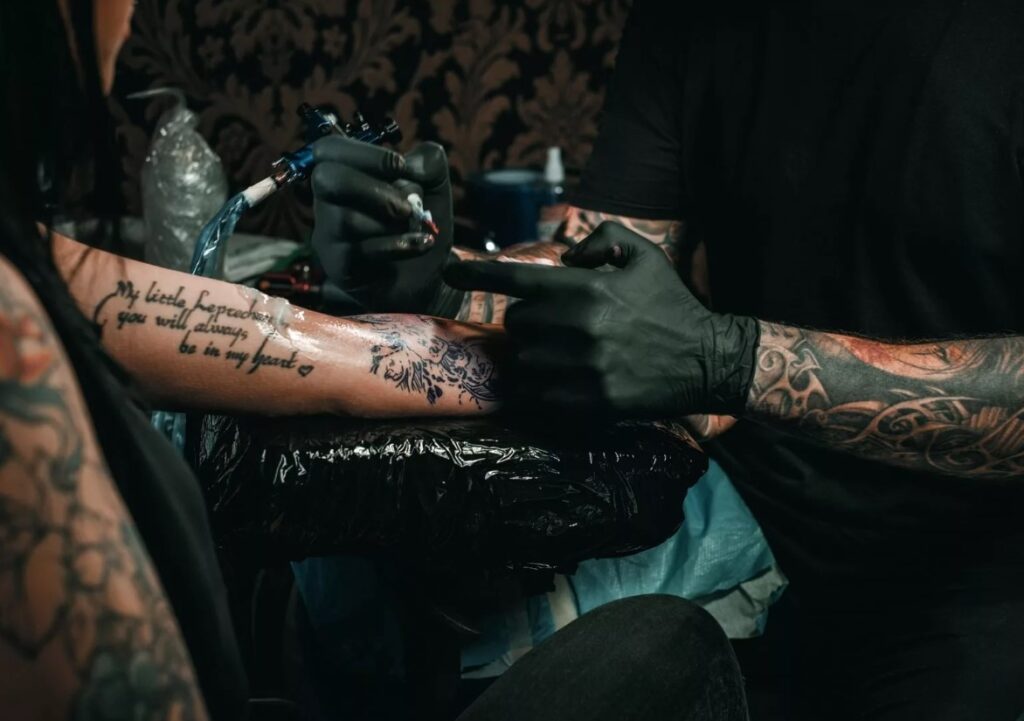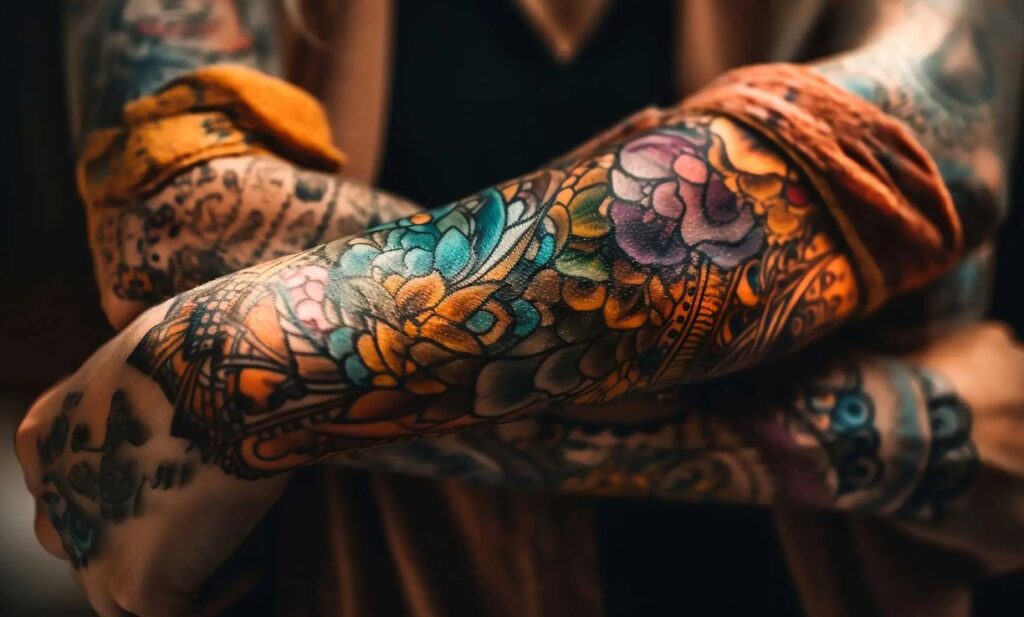Deciding to get your first tattoo is an exciting yet significant choice that requires careful consideration. Tattoos are not just art; they carry personal meanings, memories, and sometimes even commitments. Understanding what to expect can make the experience more enjoyable and less overwhelming.
Before diving into the world of tattoos, it is crucial to understand the process involved. Research different styles, designs, and artists to find what resonates most with you. This step will help you establish a vision for your tattoo, ensuring that it reflects your personality and values. Additionally, exploring various typography and placements can lead you to a unique outcome that you’ll be proud to wear for life.
One of the most important aspects of getting a tattoo is selecting a qualified artist. Look for someone with a strong portfolio and positive reviews. Communication with your artist is key; they will provide insight into design feasibility and aftercare. Ensure you feel comfortable discussing your ideas and any concerns you may have, as this will contribute to a successful tattooing experience.
Finally, be mindful of the aftercare process, which is essential for healing and preserving the quality of your tattoo. Proper care will ensure your tattoo remains vibrant and well-defined. Learning the do’s and don’ts of tattoo aftercare can save you from potential complications, allowing you to enjoy your artwork for years to come.

Choosing the Right Design for Your Personality
Selecting a tattoo design that reflects your personality is a crucial step in the tattoo process. Your chosen design should resonate with who you are, your values, and your life experiences. Start by considering what aspects of your personality you want to showcase. Are you adventurous, artistic, or perhaps more introspective? Reflecting on these traits can guide you toward a meaningful design.
Consider Your Interests and Values
Your interests and values can significantly influence your choice of tattoo design. For example, if you love nature, a floral design or an animal tattoo could resonate well. If art plays a central role in your life, consider a design that pays homage to your favorite artist or artistic style. Think about symbols that represent your beliefs or significant life events, as these can add a personal touch to your tattoo.
Think About Your Lifestyle
Your lifestyle should also play a role in your design decision. Consider factors such as work environment, family expectations, and social circles. If you work in a conservative field, a subtle design might be more appropriate than a large, elaborate tattoo. In contrast, if you are part of a creative community, bold and colorful tattoos may be more accepted. Choose a design that fits seamlessly into your life and reflects your individuality without causing unnecessary stress.
Understanding Tattoo Styles: Traditional, Realism, and More
Choosing a tattoo style is crucial for first-time clients. Each style carries its own unique aesthetic and emotional significance. Familiarizing yourself with various tattoo styles can help in selecting the design that resonates best with your personality and desires.
Here are some popular tattoo styles to consider:
- Traditional:This style, also known as American Traditional, features bold outlines and a limited color palette, primarily red, green, and yellow. Designs often include classic motifs like skulls, roses, and anchors. This style emphasizes simplicity and iconic imagery.
- Realism:Realism tattoos aim to replicate photographs or lifelike depictions. These tattoos require a high level of skill from the artist, focusing on details, shading, and depth. Common themes include portraits, animals, and landscapes.
- Watercolor:This modern style mimics the aesthetic of watercolor paintings. It features soft, flowing colors without outlines, creating a dreamy and abstract effect. Watercolor tattoos often incorporate elements like flowers and nature.
- Tribal:Tribal tattoos are characterized by bold black lines and geometric patterns. Originating from various cultures, these designs often carry deep meanings related to heritage or personal identity.
- Neo-Traditional:This style builds on traditional tattoo art by adding more colors, detail, and dimensional elements. Neo-traditional tattoos often include elements from other styles while maintaining bold outlines and striking imagery.
- Japanese:Japanese tattoos, or Irezumi, have a rich history and feature complex themes such as dragons, koi fish, and cherry blossoms. These tattoos often cover large areas of the body and incorporate intricate details and vibrant colors.
When selecting a tattoo style, consider the following:
- Your Personal Aesthetic: Reflect on what styles resonate with you and represent your personality.
- Placement: Certain styles may work better on specific body parts, especially when considering the size and intricacy of the design.
- Artist’s Expertise: Research artists based on their specialties, as their experience can greatly influence the final outcome.
Understanding these styles allows you to make an informed choice for your first tattoo, ensuring it is a meaningful and visually appealing representation of your individuality.
Finding a Reputable Tattoo Artist in Your Area
Choosing a tattoo artist is one of the most critical steps in the tattoo journey. A reputable artist not only possesses artistic skills but also prioritizes hygiene and client satisfaction. Start by researching local tattoo shops and artists through online reviews, social media pages, and portfolio websites. Look for artists who specialize in the tattoo style you want, be it traditional, realism, or abstract.
Once you have a shortlist of potential artists, visit their shops to assess the environment. A clean and organized space is a strong indicator of professionalism. Check for proper licenses and certifications, which ensure that the artist adheres to health regulations. Don’t hesitate to ask about their sterilization processes for equipment and needles as well.
Book consultations with your top choices to discuss your design and get a feel for their attitude and willingness to collaborate. During the consultation, pay attention to how they communicate and whether they listen to your ideas. A good artist will not only provide creative input but will also prioritize your comfort and safety.
Networking can also be beneficial. Ask friends or acquaintances who have tattoos for recommendations. Seeing their tattoos can provide insights into an artist’s work quality and style. Lastly, trust your intuition. If something feels off or you’re not entirely comfortable, it’s okay to continue your search until you find the right match.
Researching Tattoo Shops: What to Look For

When searching for a tattoo shop, several factors can influence your decision. Begin with assessing the cleanliness of the studio. A reputable shop should maintain high hygiene standards, including the use of sterilized equipment and a tidy working environment.
Next, take time to evaluate the artists’ portfolios. Look for a diverse range of styles and quality in the work presented. This will give you an idea of the artist’s skills and whether their artistic vision aligns with your own. Don’t hesitate to ask for references or reviews from past clients to gauge their satisfaction.
Consider the atmosphere of the shop. A welcoming and comfortable environment can enhance your overall experience. Pay attention to whether the staff is friendly and willing to answer your questions. Communication is key in expressing your ideas and concerns regarding your tattoo.
Verify the licensing and certifications of the shop and its artists. A legitimate tattoo shop should comply with local health regulations and possess the necessary permits. This not only ensures your safety but also reflects the professionalism of the establishment.
Finally, discuss pricing and the payment process. It’s crucial to understand the costs involved, including any potential deposits. Ensure that there are no hidden fees and that you are comfortable with the overall pricing structure before proceeding.
Understanding the Cost of a Tattoo and Factors That Influence Price
Getting your first tattoo is an exciting journey, but understanding the costs involved is crucial. Tattoo prices can vary widely based on several factors. Here, we explore the elements that influence the final price of a tattoo.
Key Factors Influencing Tattoo Prices
The cost of a tattoo primarily depends on the following factors:
| Factor | Description |
|---|---|
| Artist’s Experience | More experienced artists typically charge higher rates due to their skills and reputation. |
| Location | Tattoos can be more expensive in larger cities or popular areas due to higher overhead costs. |
| Design Complexity | Intricate designs or custom artwork require more time and effort, increasing the cost. |
| Size of the Tattoo | Larger tattoos take more time and materials, which translates to a higher price. |
| Color vs. Black & Gray | Color tattoos often cost more because they require more pigment and time for application. |
Understanding the Pricing Structure
Tattoo artists typically charge either by the hour or by the piece. Hourly rates can range significantly based on the factors mentioned above, while pricing by the piece often reflects the overall complexity and size. Ensure to discuss pricing upfront with your artist to avoid any surprises.
In general, tattoo costs can start as low as $50 for small, simple designs, while larger, detailed pieces can exceed several hundred to thousands of dollars. It’s advisable to budget appropriately and explore multiple studios to find a balance between cost and quality.
Preparation Steps Before Getting Inked
Before you make the decision to get your first tattoo, it’s essential to prepare adequately to ensure a positive experience. Proper preparation can help reduce anxiety, make the process smoother, and ensure that you are satisfied with the final result. Here are some key steps to consider:
1. Research and Design
Your tattoo should have personal significance or meaning to you. Follow these steps to finalize your design:
- Explore Styles: Look into different tattoo styles such as traditional, tribal, watercolor, or realism to find what resonates with you.
- Think About Placement: Consider where on your body you want the tattoo and how visible you want it to be.
- Consult Artists: Reach out to various tattoo artists and review their portfolios to find someone whose style matches your vision.
- Get Feedback: Share design ideas with trusted friends or family members for additional perspectives.
2. Health Considerations
It’s crucial to assess your health ahead of time to avoid complications during and after your tattoo session:
- Consult Your Doctor: If you have any pre-existing conditions or allergies, seek medical advice.
- Avoid Alcohol: Stay away from alcohol at least 24 hours before your appointment as it can thin your blood and increase bleeding.
- Stay Hydrated: Drink plenty of water leading up to your tattoo to keep your skin hydrated and in better condition.
- Get Enough Rest: Aim for a good night’s sleep before the day of your tattoo to help manage pain and stress.
With thorough research and attention to your health, you’ll be better prepared for a successful first tattoo experience. Remember, preparation can greatly enhance both the process and the outcome of your tattoo journey.
What to Expect During the Tattoo Process
Getting a tattoo can be an exciting yet daunting experience, especially for beginners. Understanding the process can help alleviate anxiety and set realistic expectations. Here’s a breakdown of what you can expect during your tattoo session.
Preparation and Consultation
Before the tattooing begins, you will have a consultation with your artist. This is your opportunity to discuss your design, placement, and any concerns you may have. The artist will provide insights into the tattoo process, recommend size and detail adjustments, and may even suggest additional design elements. It’s crucial to communicate your ideas clearly to achieve the desired outcome. Once both you and the artist agree on the design, you might fill out a consent form and confirm your appointment.
The Tattooing Experience
On the day of your tattoo, arrive at the studio well-rested and hydrated. Your artist will set up their equipment, ensuring everything is clean and sterile. The session will begin with the artist applying a stencil of your design to your skin to determine the exact placement. After confirming the placement, they will start the tattooing process, which involves using a tattoo machine to inject ink into the skin.
During the tattooing, expect to feel a range of sensations. While some areas may hurt more than others, pain tolerance varies from person to person. The artist may take breaks as needed, and it’s important to communicate if you feel uncomfortable. Once the tattoo is complete, the artist will clean the area and apply a protective covering. They will provide aftercare instructions to ensure proper healing.
Aftercare Tips to Ensure Proper Healing
Proper aftercare is crucial for your new tattoo to heal well and maintain its appearance. Follow these tips to ensure a smooth healing process.
Keep the Tattoo Clean
During the first few days, gently wash your tattoo with mild soap and warm water. Avoid scrubbing; instead, use your fingertips to clean the area. Pat it dry with a clean towel, ensuring not to rub the tattoo.
Moisturize Regularly
After cleaning, apply a thin layer of a recommended aftercare lotion or ointment. Products containing natural ingredients are ideal, as they help hydrate the skin without clogging pores. Reapply the moisturizer several times a day, especially as the tattoo begins to dry and peel.
Avoid sun exposure for at least two weeks. If you need to be outdoors, cover the tattoo or use a high-SPF sunscreen once it has healed. Steer clear of submerging your tattoo in pools, hot tubs, or oceans during the initial healing phase to prevent infections.
Be mindful of itching and do not scratch the tattoo. If the area is excessively itchy, try tapping it gently to alleviate discomfort. Patience is key as the tattoo heals; it can take two to four weeks for the outer layer to fully recover.
By adhering to these aftercare tips, you can help ensure your tattoo heals properly, preserving its beauty for years to come.

Common Myths About Tattoos Debunked
Tattoos have been a part of human culture for centuries, yet many misconceptions still surround them. Understanding the truth can help you make an informed decision before getting your first tattoo.
Myth 1: Tattoos Are Permanent and Unremovable
While tattoos are designed to be permanent, advancements in laser technology have made tattoo removal more accessible than ever. This process can effectively fade or eliminate a tattoo, though it may require multiple sessions and can be costly. However, consider your design carefully, as removal can be painful and not always 100% effective.
Myth 2: Tattoos Are Only for Rebels or Outcasts
Another common myth is that tattoos are exclusively for individuals who are rebellious or don’t conform to societal norms. In reality, people from all walks of life, including professionals in various fields, choose to get tattoos. Many individuals opt for tattoos to commemorate personal milestones, express creativity, or honor loved ones, showcasing that tattoos can hold deep personal significance beyond just surface-level judgments.
Discussing Pain Levels: What You Should Know
Getting your first tattoo is an exciting experience, but it’s essential to understand the pain associated with the process. Pain levels can vary significantly based on various factors.
Here are some important points to consider:
- Location on the Body: Pain levels can differ depending on the tattoo’s placement. Areas with more flesh, such as the upper arm or thigh, generally experience less pain. Conversely, areas with less muscle and more bone or nerve endings, like the ribs, spine, or hands, are often more painful.
- Personal Pain Tolerance: Each individual has a different pain threshold. What might be bearable for one person can be intolerable for another. It’s important to assess your own comfort levels with pain before deciding on a tattoo.
- Size and Detail of the Tattoo: Larger and more intricate tattoos may require longer sessions. Prolonged exposure to pain can add to discomfort, so consider the complexity of your design.
- Type of Tattooing Technique: Different techniques can elicit varying levels of pain. For instance, traditional hand-poked tattoos may feel different compared to machine tattoos. Understanding the method can help set your expectations.
- Consult with the Artist: Your tattoo artist can provide insights into what you might expect regarding pain based on your chosen design and placement. They can also recommend breaks during lengthy sessions to manage discomfort.
Pre-tattoo preparations can also help mitigate pain:
- Stay Hydrated: Well-hydrated skin is more elastic and may cause less discomfort during tattooing.
- Avoid Alcohol and Drugs: Substances can increase bleeding and sensitivity, potentially heightening pain levels during the process.
- Consider Numbing Cream: Some people opt for topical anesthetics. Discuss with your artist if this is an option for your tattoo.
Ultimately, while pain is a part of the tattoo experience, being informed and prepared can help manage your expectations and make the process more enjoyable.
Tattoo Removal Options: How to Handle Regrets
Deciding to remove a tattoo can be a daunting process, especially if it’s the result of a hasty decision. Fortunately, there are several effective options available for tattoo removal, each with its own set of advantages and considerations.
Laser Tattoo Removal
Laser tattoo removal is the most popular and widely used method. It involves using high-intensity light beams to break down the ink particles in the skin. The body then gradually absorbs and eliminates these particles. Multiple sessions are typically required for complete removal, with the number depending on factors such as tattoo size, color, and skin type. While this method can be effective, it may also cause some discomfort and potential side effects like scarring or skin discoloration.
Dermabrasion and Surgical Removal
Dermabrasion is a mechanical method where the skin’s outer layers are sanded down to remove a tattoo. This technique can be painful and may lead to longer recovery times, but it is often effective for smaller tattoos. Surgical removal, on the other hand, involves cutting out the tattooed skin and stitching the remaining skin back together. This method is best for small tattoos, as it may leave noticeable scars. Both options require professional consultation to evaluate the best approach based on the tattoo’s size and location.
Legal Considerations for Getting Your First Tattoo
Before getting your first tattoo, it is essential to understand the legal considerations that may affect your decision. Tattoo laws vary significantly depending on your location, so it is crucial to familiarize yourself with the regulations in your area.
One of the primary legal aspects is the age requirement. In many regions, individuals must be at least 18 years old to get a tattoo without parental consent. However, some states allow minors to receive tattoos with consent from a parent or guardian. Always check local laws to ensure compliance.
Licensing is another important consideration. Professional tattoo artists are typically required to obtain a license or certification to practice, which ensures they adhere to health and safety regulations. Verify that the tattoo studio you choose employs licensed artists, as this can protect you from potential health risks associated with unregulated practices.
Health regulations govern sanitation practices in tattoo parlors. All tools and equipment should be sterilized, and disposable materials should be used to minimize the risk of infection. It is your right to inquire about the hygiene practices of the studio before getting tattooed.
Liability waivers are common in tattoo parlors. You will likely be required to sign a waiver acknowledging that you understand the risks involved in getting a tattoo. Read this document carefully before signing it; it outlines your rights and responsibilities and often details the studio’s policies.
Finally, consider the permanence of tattoos from a legal standpoint. If you change your mind about a tattoo, removal can be costly and time-consuming. Some jurisdictions have laws regarding tattoo removal practices, including licensing for those who perform the procedure. Make sure you consider the long-term implications of your choice.
By understanding these legal aspects, you can make informed decisions regarding your first tattoo and ensure a safe and enjoyable experience.
Q&A:
What should I consider before getting my first tattoo?
Before getting your first tattoo, think about the design, placement, and size of the tattoo. It’s important to choose a meaningful design that you will appreciate for a long time. Consider how visible the tattoo will be based on your lifestyle and job. Additionally, think about the size; larger tattoos may require more time and budget.
How do I choose a reputable tattoo artist?
To find a reliable tattoo artist, start by researching local studios and reading reviews. Look for artists whose style resonates with your desired design, and check their portfolios. It’s also helpful to ask for recommendations from friends or online communities. Once you narrow down your options, visit the studios, ask questions, and assess their hygiene practices to ensure a safe experience.
What is the healing process like after getting a tattoo?
The healing process for a tattoo typically takes about two to four weeks. Initially, the tattoo may be red, swollen, or tender. After a few days, it will start to scab and may itch, which is a normal part of healing. It’s crucial to follow aftercare instructions provided by your artist, which often include keeping the tattoo moisturized and protected from the sun. Avoid picking at scabs to prevent damage to the tattoo.
Are there any risks associated with getting a tattoo?
Yes, there are potential risks involved in getting a tattoo. The most common concerns include allergic reactions to ink, infection if proper hygiene isn’t followed, and the possibility of scarring. It’s essential to go to a licensed and experienced tattoo artist to minimize these risks. If you have any skin conditions or allergies, consult with a medical professional before getting a tattoo.
If you’re looking for a Trendy Tattoo Artist in Chicago, our studio is ready to provide unique designs and a professional approach to every tattoo.



